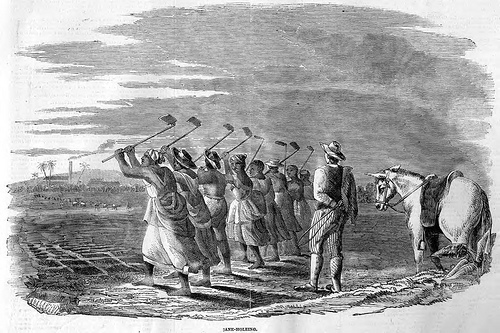

Accompong went to the town of Saint Elisabeth in a town called Accompong Town. Nanny and Quao founded the communities in the commune of Portland. At each annual Maroon celebration of the Peace Treaties of 1739, there is a “private” element of the festivities which only the Maroons can attend, where ancestors are expected to visit the living, including Queen Nanny who is honored.Īfter their escape, Nanny and her fighting brothers split up to organize more brown communities across Jamaica. Their resistance to slavery was based on their African cultures and identities. Spiritual practices such as Obeah (and voodoo in Haiti) evolved from Africa, and during periods of slavery were of great importance to the black population. Almost all slave rebellions have involved African spiritual practices. Spiritual and religious life was important.
#Battle slaves jamaica free
įor more than 150 years, the Maroons have helped free the slaves from the plantations by damaging the land and property belonging to the plantation owners.īetween 16, they led most of the slave rebellions in Jamaica. Later, when the English took control of the colony, most of the slaves were able to flee the plantations to join the two main Maroon groups in Jamaica: the Windward and the Leeward, led respectively by chiefs Nanny and Captain Cudjoe. They have refused their sad slave destinies and we prefer to resist and fight for their freedoms.ĭuring Spanish governance, until 1650, the slaves escaped and married the native inhabitants of the island, the Arawaks. They were seen as fierce, deadly and hard-fought fighters. They came from the Akan region of West Africa and other parts of Africa. They formed their own community in the mountainous regions of the island. In Jamaica, this group was called Coromantie or Koromantee. They are enslaved slaves who escaped from slavery and formed independent colonies of free women, men and children. The Maroons are the descendants of the Afro-Caribbean. Nanny was married to a brown named Adou, but they had no children. For more than 30 years, she freed more than 800 slaves and helped them settle in the Brown communities.

From there, they led several revolts across Jamaica. With his brothers Accompong, Cudjoe, Johnny and Quao, they fled the plantation and hid in the Blue Mountains region. In these plantations, the working conditions were particularly harsh.

As soon as they arrived, Nanny and his compatriots were sold to a plantation in the commune of Saint Thomas, near Port Royal. In the English language, the word “nanny” is used to designate a person who takes care of a child in the absence of his parents.īorn in 1685, of Akan ethnicity, she was kidnapped and enslaved in Jamaica with members of her people. Originally from the West African coast (Ghana), Nanny is a Jamaican heroine and leader, an emblematic figure of the resistance of the maroons against slavery. Who is Nanny, queen of the Maroons? (around 1685 – 1733 or 1760) When the slaves escaped, they formed hidden communities living in the forests or the mountains. Abused, enslaved, deprived of the right to defend themselves, African slaves worked in extremely harsh conditions. These slaves came from Gold Coast, Congo and Madagascar. Nanny (queen of the Maroons): heroine of the fight against slavery in Jamaica


 0 kommentar(er)
0 kommentar(er)
